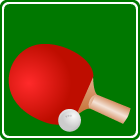


START
LESSON
GO TO THE GAMES
Click on the correct answer.
You will see the left side of an equation. Then you will see and hear two possible answers for the right side of that equation.
Click on the correct answer.
There are 10 questions in this test.
to start the lesson

alexeeeerrrrrrr
"Doubling each time"
Secondary math lessons to learn
'Count terms in expressions' for 6th grade
6th grade / Algebra / Algebraic notation / Algebraic notation / Count terms in expressions
Count terms in expressions
In algebra a "term" is any combination of variables, exponents and constants or coefficients upon which mathematical operations such as addition or multipliation can be performed. Examples of terms are:
5q 47c -15g 6y³ -cd⁻³
Terms are most often found grouped together into expressions. Expressions are groups of terms separated by mathematical operators. Examples of expressions are:
y + 5 3y² - x 2f x 3f⁻³ 4g³ ÷ 15h⁴
How to count terms in an expression
Terms in an expression are separated by mathematical operators such as plus or minus. To count terms, take the number of operators and add 1. Or count the things you know are terms based on our definition above.
5p² + 3q⁵ - 8
So in the expression above we have 3 terms ( and 2 mathematical operators ).
Why do we care how many terms there are in an expression?
This topic is checking that you can distinguish what makes an element in an expression a term. By asking you to count terms, we are helping to clarify what is or isn't a term in an expression. Remember that constants (numbers without variables) are also terms if they are not coefficients of variables.
a³ + 3a³ 2 terms : a³ and 3a³
5p² + 3q⁵ - 8 3 terms : 5p² and 3q⁵ and 8
With these interactive math lessons you will be learning "Count terms in expressions" from
6th grade / Algebra / Algebraic notation in 3 easy steps. The math in our lessons consists of 6 questions that ask you to count the number of terms in each of the given expressions.
There are 3 easy math lesson activities in this "Count terms in expressions" tutorial. These activities progress step by step to help you the learner gradually master this math topic. The activities are based on "3 stage questioning", a method of learning that quickly and easily builds your confidence as you work through the short series of lessons that strengthen your knowledge of the math that you want to learn.
When you have completed the tutorial for a topic, you should try some of our games before finally doing the test for your chosen topic. See the Help box below for detailed instructions on how to use the lesson activities to help you learn your math more easily.
UXO * Duck shoot * The frog flies * Pong * Cat and mouse * The beetle and the bee
Rock fall * Four in a row * Sow grow * Choose or lose * Mix and match





How to use our tutorials to learn
'Count terms in expressions' for 6th grade
Introduction to the math topic
You start the tutorial with a lesson that introduces the math you will be learning. You will see a set of questions one at a time, and for each question you will see the written answer and also hear the answer to that question.
Repeat the question/answer by clicking on the brown speaker sign. Repeat the question/answer and expand the question graphic by clicking on the question box. Move between questions using the arrow buttons below the question. If there is additional information available for your chosen topic, the "i" button on the left upright bar will be brown on white. Click on the button to load the additional lesson information into the main interface.
Either / Or math lesson
This lesson moves on from the "Introduction" lesson and offers you two possible answers to each question. So, you will see a question then a voice will ask "Is this ... or is it ..." and you will have to choose which of the answers is the one that matches the question.
You choose an answer by clicking or tapping on one of the two answer boxes below the question. You can play the audio for each answer again by clicking on the speaker icon beside the written answer (if robot speech is available and enabled). The program will let you know each time whether you answered correctly. A star will light up red for a wrong answer or white/black for a correct answer.
This lesson asks you the questions in a random order compared to the introduction. At the end of the lesson, you can choose whether to repeat the lesson or move on to the next one.
What is it? math lesson
The final lesson of the tutorial shows you multiple possible answers for each question - you must choose the correct one. You are asked a question and below it are a list of two, three, or four possible written/numeric answers from this topic. Pressing the speaker icon will play the math audio for that answer.
For each picture, click on the answer that matches the question. The program will tell you whether you are right or not. As with the Either / Or activity a system of stars indicate your right and wrong answers. The What is it? lesson will show you all the questions you learned in the Introduction but in a random order.
When you complete the "What is it?" lesson, you can choose whether to go on to play some games with this topic, or whether you want to repeat some or all of the lesson activities in this tutorial. You should expect to get 80% of the answers correct in most of the activities before trying some of the Math games with this topic.











